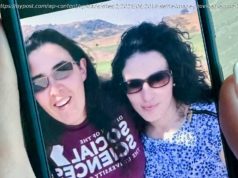Amyotrophic lateral sclerosis, or Lou Gehrig’s disease, still has no cure.
A neighbor of mine was recently told he has a devastating neurological disorder that is usually fatal within a few years of diagnosis. Though a new drug was recently approved for the illness, treatments may only slow progression of the disease for a time or extend life for maybe two or three months.
He is a man of about 60 I’ ve long considered the quintessential Mr. Fix-it, able to repair everything from bicycles to bathtubs. Now he is facing amyotrophic lateral sclerosis, or Lou Gehrig’s disease — a disease that no one yet knows how to fix.
I can only imagine what he is going through because he does not want to talk about it. However, many others similarly afflicted have openly addressed the challenges they faced, though it is usually up to friends and family to express them and advocate for more and better research and public understanding.
A. L. S. attacks the nerve cells in the brain and spinal cord that control voluntary muscle movements, like chewing, walking, breathing, swallowing and talking. It is invariably progressive. Lacking nervous system stimulation, the muscles soon begin to weaken, twitch and waste away until individuals can no longer speak, eat, move or even breathe on their own.
Last year, the Centers for Disease Control and Prevention estimated that between 14,000 and 15,000 Americans have A. L. S., which makes it sound like a rare disease, but only because life expectancy is so short. A. L. S. occurs throughout the world, and it is probably far more common than generally thought.
Over the course of a lifetime, one person in about 400 is likely to develop it, a risk not unlike that of multiple sclerosis. But with the rare exception of an outlier like the brilliant physicist Stephen Hawking, who has had A. L. S. for more than 50 years, it usually kills so quickly that many people do not know anyone living with this disease. Only one person in 10 with A. L. S. is likely to live for a decade or longer.
The disease is most commonly diagnosed in middle age, among people in their 50s or 60s, though it sometimes afflicts young adults. Dr. Hawking was found to have it at age 21.
Early symptoms can be very subtle and thus are often overlooked or attributed to a minor problem like lack of sleep, undue stress, overwork or poor diet. However, the underlying damage can start long before the symptoms are noticed. Given the redundancy built into the brain, about a third of motor neurons are destroyed before signs of muscle loss become apparent.
Initial symptoms depend on which group of motor neurons are affected first. In about 70 percent of people, the first symptoms involve muscle weakness in the legs or arms that can result in frequent tripping, instability, stiffness, difficulty walking or inability to open a jar or turn a key. About one-quarter of cases start with muscle loss in the face, mouth and throat, resulting in slurring of speech and swallowing difficulties, and in 5 percent, the muscles of the trunk are first affected. However, in most people the disease soon spreads to affect nearly all voluntary movements.
Patients usually retain control over bladder and bowel function and eye movement until very late in the disease. In fact, after losing the ability to speak or write, many learn to communicate by looking at letters or words on a computer and using a voice synthesizer.
Sensory nerves and the autonomic nervous system are usually spared so that most with the disease can hear, see, touch, smell and taste. But as patients lose the ability to swallow, oral feeding creates a choking hazard — some, in fact, choke on their own saliva — and tube feeding becomes the only option for maintaining nutrition.
Half or more of patients remain mentally sharp, bearing painful witness to their physical decline, although mild cognitive and behavioral changes are fairly common, and 10 percent to 15 percent of patients develop symptoms of frontotemporal dementia. They may become withdrawn, apathetic, uninhibited, distractible and repeat words or gestures.
The cause or causes of A. L. S. are unknown in 90 percent to 95 percent of cases. The remaining cases are inherited from a parent who carries a mutation in one or more genes. Researchers are studying these genes in patients and engineered mice in hopes of developing drugs or stem cells that slow, stop or even reverse progression of the disease.
For example, a recent study published online in JAMA Neurology by researchers at Methodist Neurological Institute in Houston suggests that reducing inflammation by modifying certain abnormal immune cells may prove helpful to patients, especially if the treatment could be applied early in the disease.
Other recent studies in mice, yeast and fruit flies by researchers at Stanford University School of Medicine suggest that suppressing a certain protein called ataxin-2 may foster resistance to A. L. S. In mice genetically engineered to have A. L. S., Lindsay Becker, a graduate student, found that completely removing ataxin-2 enabled some of the animals to live “hundreds and hundreds of days, ” instead of only a month.
Another promising avenue of research involves the abnormal behavior of an enzyme called RIPK1, which can damage neurons by disrupting the production of the myelin sheath that insulates axons, the neuron extensions that transmit signals from one cell to the next. Researchers at Harvard Medical School showed that in genetically engineered mice with A. L. S., a substance called necrostatin-1 not only restored the myelin sheath and stopped axon damage but also prevented limb weakness.
Currently, only two drugs have been approved for treating A. L. S. One is Rilutek (riluzole) , which counters the elevated levels of the neurotransmitter glutamate that arise in the brains and spinal fluid of A. L. S. patients. Its limited effect on life span — an extension of a few months — suggests that excess glutamate is hardly the only noxious factor involved in the disease. The Food and Drug Administration just approved a second drug, Radicava (edaravone) , said to slow progression of the disease in a six-month study in Japan, though its effects on survival are not yet known. It must be administered intravenously for 10 days every two weeks at a cost of more than $145,000 a year for the medication alone.






![Drony nad Polską. Oto kiedy naruszały naszą przestrzeń powietrzną? [KALENDARIUM]](http://nhub.news/wp-content/uploads/2025/09/thumbb0c02e8630e5456d5896703b98be9600-100x75.jpeg)